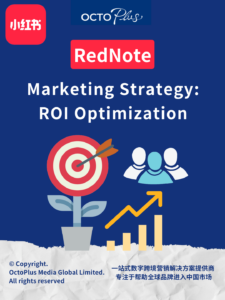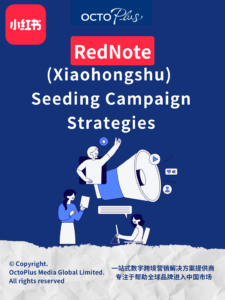China Marketing Insights Monthly Newsletter [August 2022]



Hello,
Welcome to our August Newsletter.
Finally, Didi’s saga has come to an end. Even with a record fine of $1.2B, there is little clarity on the future and how other companies can avoid a similar fate. In this latest article on China regulations, we explore the details of the fine, various data collected, and the complex relationship of various agencies that came together to impose one of the biggest fines on a Chinese company.
WeChat has released a new in-feed video ads format – we take a close look at this fast-growing segment of WeChat video channels & advertising options.
We have worked on several insights reports for this newsletter – 1) Live-streaming market analysis – In the report from Analysys, we highlighted a few key points about the development characteristics, user insights, and future development of China’s live-streaming market; 2) China Mobile Internet Semi-Annual Summary – This report analyses the marketing and advertising strategy of the mobile internet market, and characteristics of internet development in different industries; 3) Chinese consumer trends outside of China – In-depth insights and consumers’ cross-border shopping trends, user groups and consumer preferences are highlighted.
In the app of the month, we feature Maimai – LinkedIn of China. With LinkedIn exiting the professional social media space, Maimai is the best option to reach B2B clients and young professionals.
Sincerely,
Mia C. Chen
CEO & Co-Founder of OctoPlus Media

CHINA REGULATIONS - WHY DID DIDI GET FINED US$1.2 BILLION?
With the increasingly strict implementation of China’s regulatory policies, it is not surprising to find that China is reviewing major leading platforms with unprecedented intensity, and issuing “sky-priced fines” to platforms that violated the law to alarm others. Apart from Alibaba, this round Didi’s sky-high fines is even more staggering.

Didi’s exorbitant fine
Upon review and investigation, the evidence is conclusive that Didi has violated Cybersecurity Law, Data Security Law, Personal Information Protection Law, etc. On July 21, the Cyberspace Administration of China (CAC) fined Didi Global Inc. 8.026 billion renminbi (USD 1.2B), while the chairman and CEO of Didi Global Inc. Cheng Wei and President Liu Qing were fined 1 million renminbi (USD 150,000) each.
So what exactly did Didi violate?
According to the investigation, Didi has 8 main aspects violations (16 illegal facts in total), as follows:
Illegal collection of screenshot information from users’ mobile phone photo albums (11.9639 million pieces);
Excessive collection of user clipboard and application list information (8.323 billion pieces);
Excessive collection of passenger facial recognition information (107 million pieces), age group information (53.5092 million pieces), occupation information (16.3356 pieces), familial relationship information (1.3829 million pieces), home and work address ride-hailing information (153 million pieces);
Excessive collection of precise location information (latitude and longitude) from running the app in the background, or when the mobile phone is connected to the Orange Video recorder equipment, while the user reviewing substitute drive services;
Excessive collection of driver education history information (142,900 pieces) and storage of driver national identification numbers in plain text (57.8026 million pieces);
Analysis of passenger trip intention information (53.976 billion pieces), city of residence information (1.538 billion pieces), and business trip or travel information (304 million pieces) without having notified passengers;
Frequently requiring irrelevant ‘phone permissions’ when passengers use ride-sharing services;
Inaccurate and unclear explanation of 19 personal information handling purposes such as user device information
Didi in violation of law and regulations posed serious risks and hidden dangers to China’s national security. Furthermore, it fails to conduct complete and thorough rectification when instructed by regulatory authorities, which is extremely despicable. For repeated violation and 7-year continuous violation of the Cybersecurity Law (CSL), the Data Security Law (DSL), the Personal Information Protection Law (PIPL), the illegal processing of up to 64.709 billion pieces of personal information, and illegal acts that threaten China’s national security, it is reasonable that CAC imposed such punishment to Didi.

In the era of big data, compliant and legal collection of personal information can optimize enterprise market decisions from an enterprise perspective, while consumers are still the ultimate beneficiaries. The most common type of information are:
Information about specific functions: mobile phone number, membership, password, real name, gender, date of birth, place of residence, identity card, etc
Information of additional services: geographic location, contacts access, phone storage access, camera or microphone access, etc
The first type of information collection is mainly to provide the precise marketing direction for brands and personalized services for users, and also to respond to the real-name authentication requirements of China’s regulatory policy. As for the second type of information collection, it is mainly to provide users with rapid and convenient service, however, some platform software makes it mandatory, and users won’t even be able to use the software if users disagree. Last year, the CAC, Ministry of Industry and Information Technology, Ministry of Public Security, and the State Administration for Market Supervision jointly issued the “Regulations on the Scope of Necessary Personal Information for Common Types of Mobile Internet Applications”, which clearly instructs major APP operators are not allowed to refuse users to use the basic functions of the APP when users disagree to collect non-essential personal information. On the pretence of collecting information, Didi illegally collects and processes users’ personal information, and makes it looks like it is for better and more accurate services to users, but no one knows its true intention.
Didi currently has about 377 million active users and 13 million active drivers in China, which means that Didi has at least 377 million user data. Given that Didi handles personal information illegally, it might know users better than themselves, and this data is the most precious resource in the information era, and from this data, Didi can analyse personal behaviour through ‘algorithms’, which then seriously violates personal rights and interest of users, and also further violates China’s ‘clean cyberspace’ plan. Earlier, the “Holding Foreign Companies Accountable Act” passed by the U.S. Congress earlier requires foreign companies to provide internal company information and data in order to be listed. Didi rushed to go listed in the United States before the implementation of the data security law and disregarded data security and China’s cybersecurity, which is why China treated Didi’s violations of laws and regulations as a serious threat to national security and imposed such penalties.
China Regulatory Policies
Since the implementation of China’s Data Security Law last year, China companies and individuals are restricted to provide any foreign ministry of justice and foreign law enforcement agencies with any data stored in China, and the Cyberspace Administration of China has required online platforms that hold more than 1 million users personal data must apply for a security review before listing in a foreign country. In recent years, China has promulgated laws and regulations such as CSL, DSL, PIPL, Critical Information Infrastructure Security Protection Provisions, Cybersecurity Review Measures, and Outbound Data Transfer Security Assessment Measures, to continuously strengthen the protection of personal information, data security, and cybersecurity. Through warnings, fines, business closures for rectifications, website closures, takedowns from Appstore, law enforcement consultations, and ordering to make rectifications, these law enforcement efforts are used to crack down on illegal acts. China amplified the exposure of these cases, not only to have an effective deterrent but also to educate and guide the enterprises to operate legally, thus it can help to promote a healthy, regulated, and standardized development of enterprise.
China’s increasingly stringent regulatory policies also mean that the emphasis on personal information protection is gradually increasing. The implementation of China’s regulatory policies will act as an effective deterrent for the enterprises while preventing the leakage of personal information and protecting the legitimate rights and interests of the public. China’s regulatory policies will only continue to be stricter, and government agencies will strengthen their scrutiny and enforcement, Didi’s punishment is just a starting point, and there may be more fines, warnings, and business closures in the future. We recommend that enterprises that abide by China’s regulatory policies do not outweigh the gains.
We will continue to follow China’s regulatory policy updates, contact us to understand more and discuss about China’s marketing strategies.
CHINA MEDIA UPDATE – NEW WECHAT CHANNELS VIDEO IN-FEED ADS
WeChat video account native advertising was officially launched on July 18, opening a whole new advertising scene for WeChat in-feed media.
Earlier, WeChat video accounts gradually launched online live broadcasts, rewards, shopping carts, and other features. This time, the access to in-feed advertisements and the launch of the video accounts will greatly speed up the commercialization of video accounts.
Currently, BMW, Giorgio Armani, and SATINE have launched an in-feed WeChat video ad, and they have become the pioneers of WeChat video account in-feed advertisement, enjoying the platform’s initial stage’s traffic bonus.

WeChat video account advertising scene
After clicking the advertising component cards of the three advertisers respectively:
BMW shows a popup page to guide users to “book a test drive” and users will need to fill in the name, address, and authorized mobile phone number
Giorgio Armani redirects users to JD Mall but also supports users to complete the entire purchase process within the video account
SATINE connects users to links within the WeChat domain such as mini-programs and WeChat Enterprise
Three main benefits of in-feed video ad
1. Expand brands’ outreach
The native advertisement of the video account will appear in the lower-left corner of the video. Users will be able to forward the video to the Moments, WeChat conversations, or tap the love button to recommend it, after that, users will also be able to see the recommendation when they scroll through the friend’s column.
2. Watching and shopping in tandem
Seamless connection of various functional components within the WeChat ecosystem: when the brand advertisement catches users’ attention, users can click on the video advertisement content and be directed to the brand mini-program store. The video playback will not be interrupted during the process, users will also be able to make purchases, register, etc. This will help brands achieve better sales goals.
3. Multi-ecological touchpoints
Within the in-feed ad, video can help promote brands’ WeChat Enterprise accounts, when users come across a short video of the brand that they are interested in, the lower left corner of the video will guide users to add the brand’s WeChat Enterprise account. This will help brands to better manage their private domain traffic, and promote conversion.

WeChat video account offers significant commercialization opportunities
Multiplied traffic and accelerated commercialization. WeChat video account has more than 1.2 billion MAU, thus having an innate traffic advantage.
In December 2021, the number of WeChat video accounts has reached 500 million DAU, a YoY increase of 78%, and its user volume is already in between Douyin and Kuaishou, which means there is still a lot of potential for video accounts, same goes with its commercial value.
Among all commercialization attempts, it is believed that in-feed advertising will be the largest income source for video accounts in the future.
Tencent value WeChat video accounts and constantly launches new functions and new attempts to commercialize, including short video in-feed advertisements, live broadcast rewards, and live broadcast e-commerce.
With WeChat’s enormous number of users, video accounts will be able to quickly expand their user base (which is beyond the reach of any competitor); video accounts’ user time is on a continuous upward trend; and the WeChat ecosystem’s strong infrastructure. All these factors allow WeChat video account in-feed advertisements to quickly connect with users, resulting in generating transaction behaviours, and the brand marketing result is something to look forward to in the future.
To start your WeChat video account advertising, please contact us.

2022 INSIGHTS ON CHINESE CONSUMPTION TRENDS IN HONG KONG, MACAO AND TAIWAN
Since 2020, the epidemic has accelerated the increase in the penetration rate of online shopping around the world, and the cross-border e-commerce industry is at an all-time high. Recently, JD Global and JDR JD User Research Department jointly launched the “2022 Overseas, Hong Kong, Macao and Taiwan Consumption Trend Insights”.
The insight report is based on JD.com’s in-depth insights into Hong Kong, Macao, Taiwan and overseas consumer demand, and reveals the trend of consumers’ cross-border shopping needs from the perspectives of overseas markets, user groups and consumer preferences.
The scale of cross-border e-commerce continues to grow
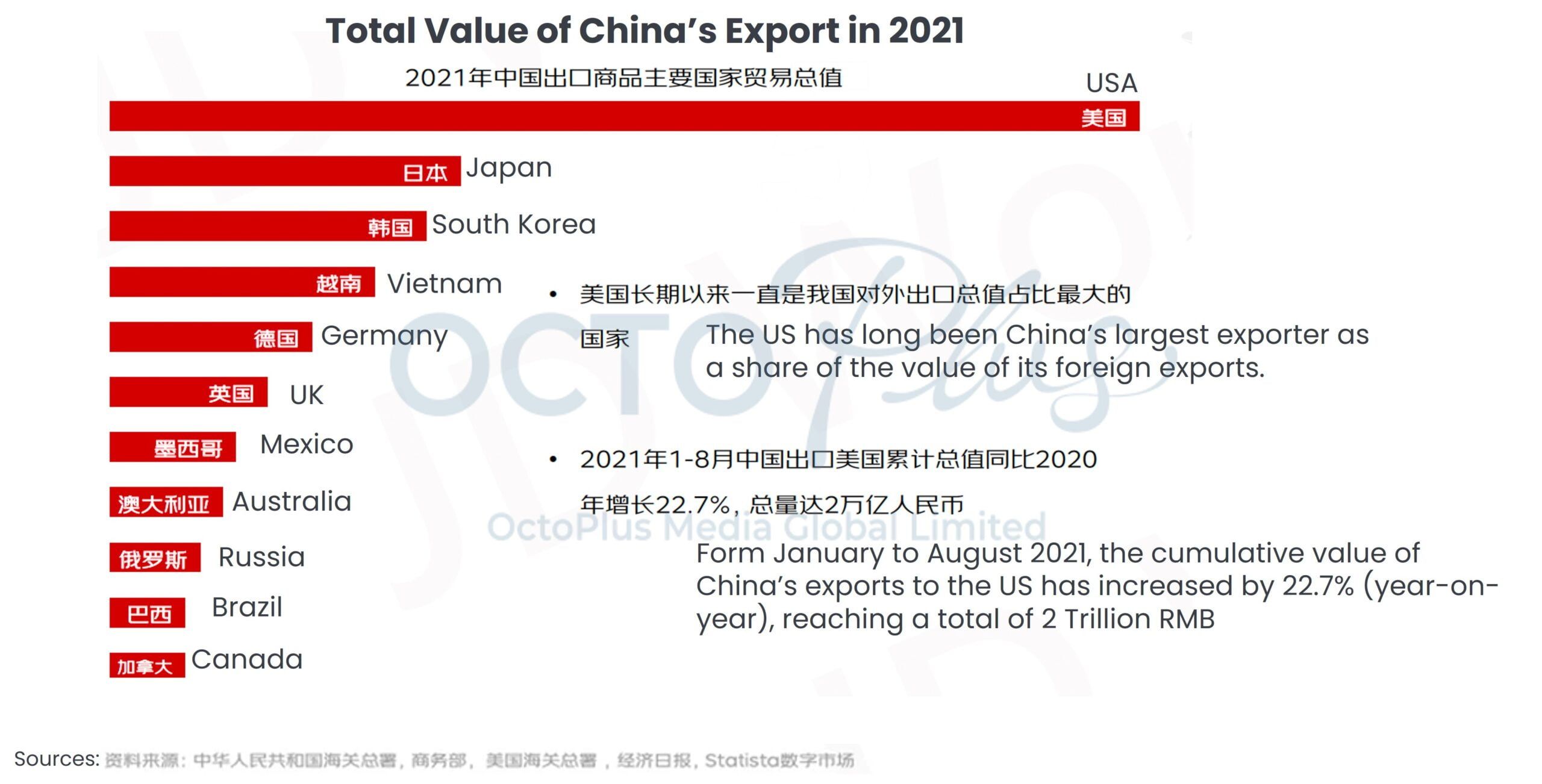
According to the report, the scale of cross-border e-commerce has increased by nearly 10 times in the past five years. In 2021 alone, the scale of China’s cross-border e-commerce imports and export has reached 1.92 trillion yuan. Mature regional markets such as the USA also have strong demand for cross-border e-commerce, and openness to international sellers also fosters cross-border online shopping habits of local users.
Status of overseas consumers
Traditionally overseas countries prefer physical activities to online. However, due to the pressure of epidemic prevention in various regions in the past two years, outdoor activities are generally limited, and many users have a trend of moving online for entertainment and will pass their leisure time through e-commerce.
Some of China’s users living in overseas areas still retain the habit of using large-scale application platforms in China. Although the number of overseas application platform channels has increased, they still mainly use top APPs, such as WeChat, Douyin, JD.com, WeChat etc.
Purchasing habits and demands of Hong Kong, Macao and Taiwan consumers
Cross-border online purchases by consumers from Hong Kong, Macao and Taiwan are mainly daily purchases (41.8%), purchasing for relatives and friends (37.1%) and promotional purchases (21.1%). The daily purchase needs are based on timeliness commitments or after-sales service, the purchasing needs for relatives and friends are mainly family accounts or children’s shopping carts, and promotional purchases focus on shipping or regional discounts.
Users have the highest purchasing demand for food and beverage, computer appliances, medical care and other categories, which are the main products for cross-border online shopping. Compared with users’ purchase behaviour in China, the proportion of orders in the above categories is also higher.
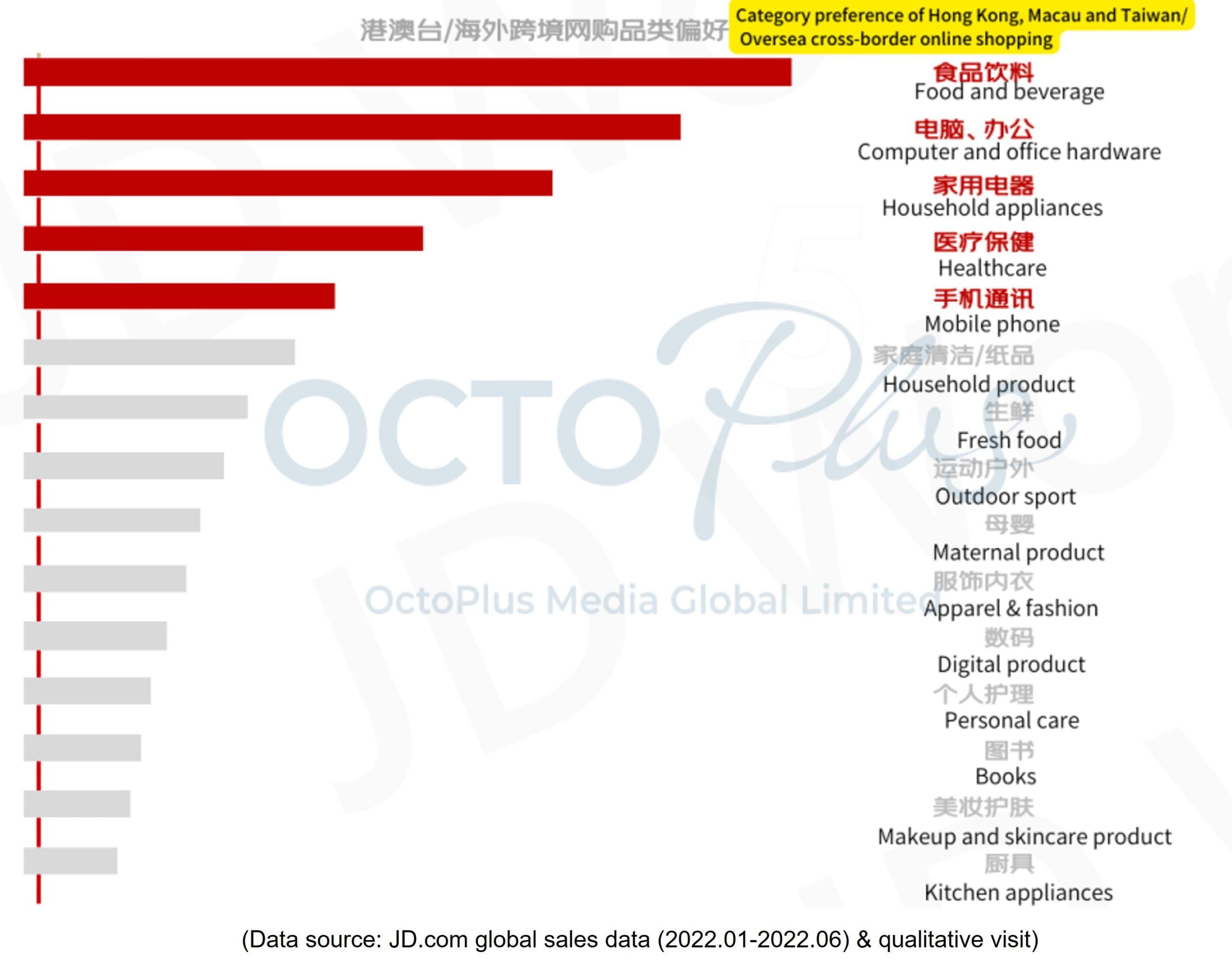
Other key insights –
Overseas users are more sensitive to product discounts and shipping costs, and consumers have the highest overall preference for product promotions.
Users’ demand for shipping is slightly higher than the demand for discounts on products. When comparing the price of products against overseas e-commerce or offline stores, the freight prices have a greater impact on decision-making.
If the shipping cost is too high, the user may give up the idea of purchasing from China.
The consumption habits of overseas users have gradually changed, and cross-border online shopping has gradually become their habit. If you want to know more about the “2022 Overseas, Hong Kong, Macao and Taiwan Consumption Trend Insights “. For more details, please contact us.
2022 CHINA'S ENTERTAINMENT LIVE-STREAMING MARKET ANALYSIS
With the advent of the 5G era and the uprising trend of live streaming e-commerce that’s driven by the epidemic in recent years, live streaming has grown rapidly and has found its feet in an upward trend in the China market. According to Analysys’ “Annual Comprehensive Analysis of China’s Entertainment Live-streaming Market 2022” report, the following summarizes a few key points about the development characteristics, user insights, and major topics about China’s live streaming market future development.
I. Development characteristics of the live streaming market
After the entertainment live streaming market entered a mature period, the scale has shown a slowdown in growth, in 2022, it increased by 5.08% month-on-month, and it is expected to maintain stable growth thereafter. Therefore, the entertainment live streaming platform and upstream-downstream enterprises in the industry are working together to explore new business models. Driven by popular content platforms such as short videos webcasting has become a basic content form, cultivating a large number of potential users. In April 2022, Huajiao, InKe, and Showself have become the top three live streaming platforms in the industry, and have the advantage to reap the ever-expanding resource by being the leading live streaming platform.
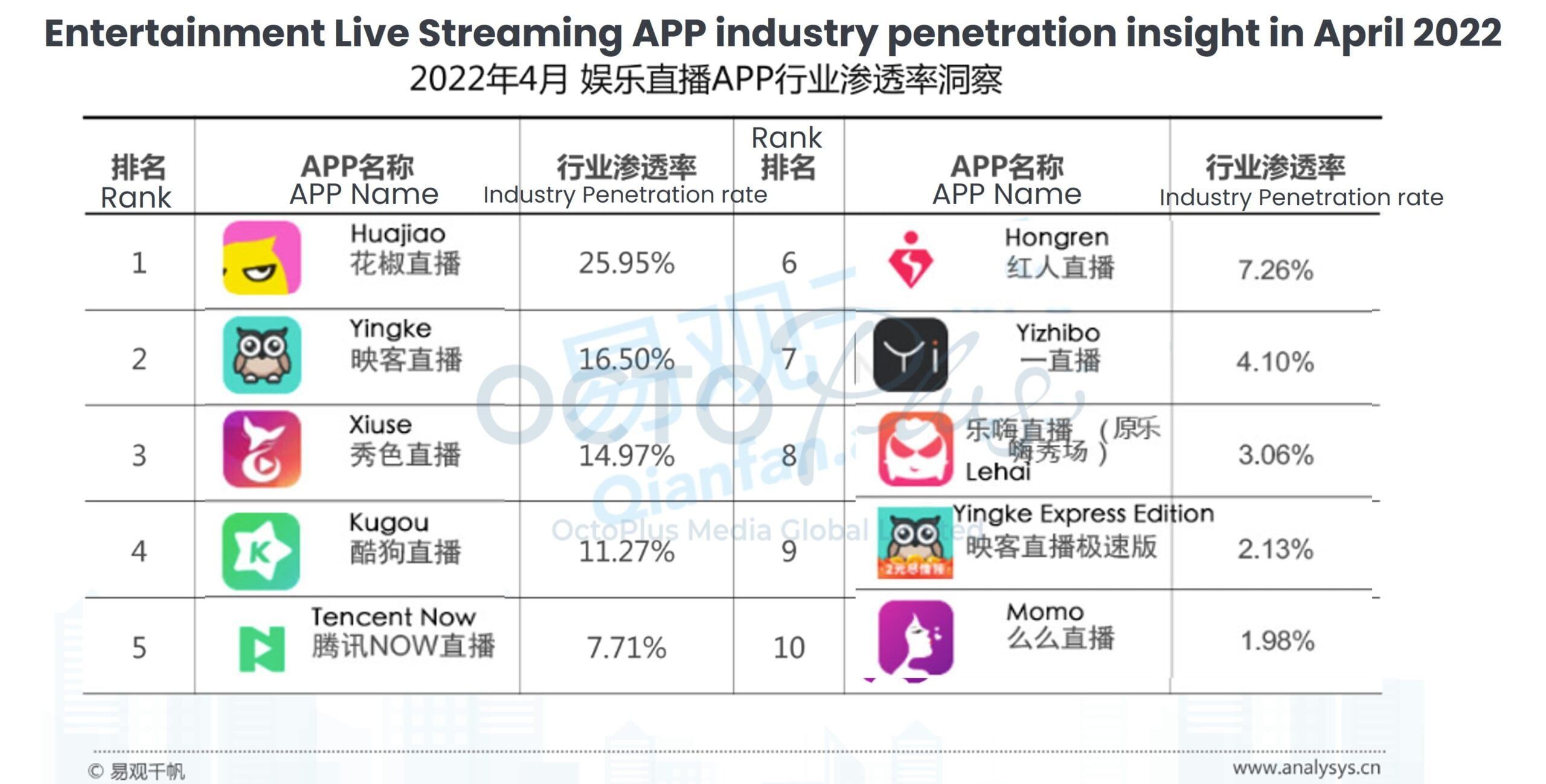
According to the data, live streaming platforms like Huajiao utilize various type of high-quality anchors and attracts users via various types of rich content, thus user stickiness remains high. While live streaming platforms like KuGou combines “live streaming + music”, to provide an interactive platform for celebrities or amateurs to perform, and they consolidate their leading position in that area. “Live+” has become a benchmark in the industry, which means that the content of live streaming is no longer limited to traditional content such as daily life and talent shows, but more emerging content such as game events, travel check-in, store exploration, product introduction, etc, allow users to enjoy a novel viewing experience.
In addition, the current live streaming content makes full use of the media attributes, integrates more social value content into the live streaming form, and actively participates in a number of public welfare activities, resulting in the expansion of social influence. However, with the rise of the “metaverse”, the entertainment live streaming platform has integrated the “online + offline” model for further innovation, such as interacting with 3D customized avatars in the online live streaming room or actively expanding the offline event scene, allow users to feel the presence even with live streaming.
II. User insights
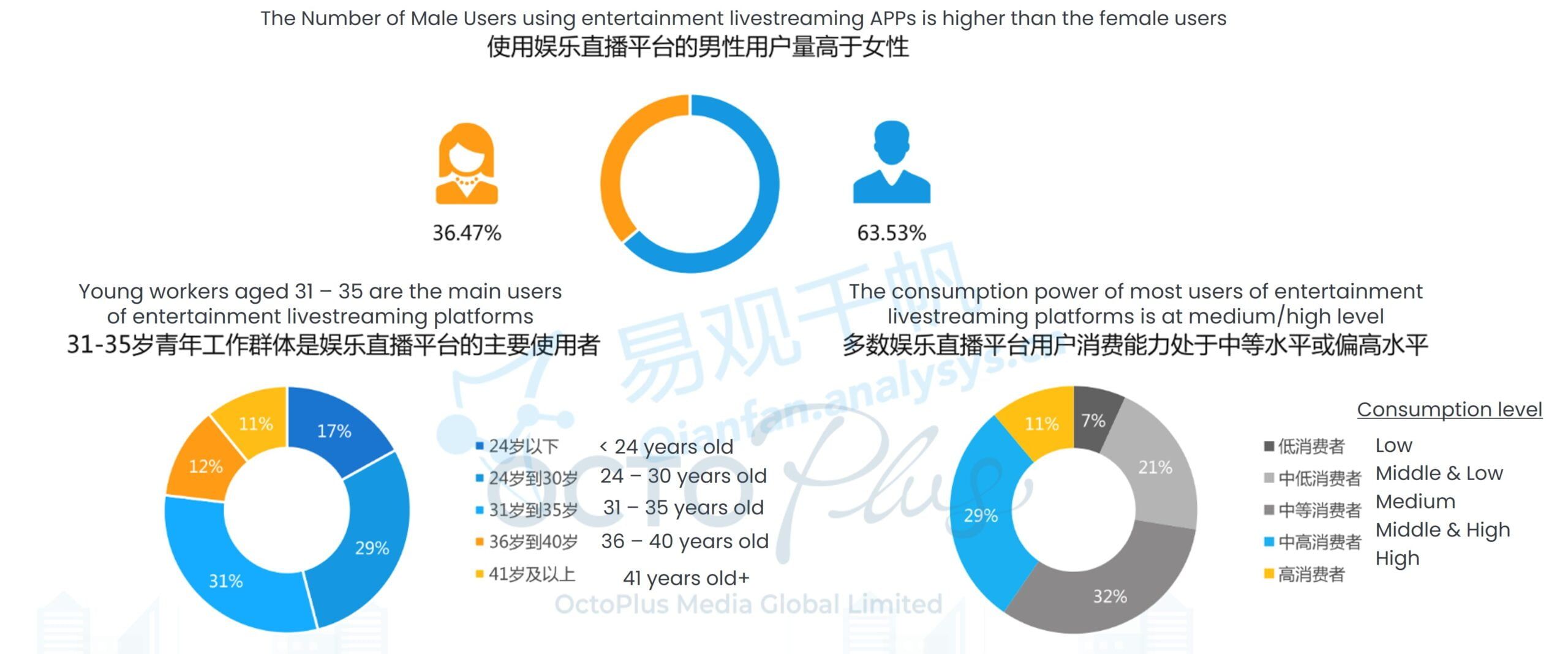
64% are Male users
Main users are youth working groups aged 31-35 (31%) and 24-30 (29%)
Moderate or slightly high spending power
Users mostly from new tier 1 cities, followed by tier 2 and tier 3 cities, Guangdong province being the most active
Users are most active from 7 pm to 11 pm, it is presumed that the main reason is users wind down and release stress by watching entertainment live streaming.
III. Future market trends insights
With the advancement of technologies such as 5G and XR, the entertainment live streaming platform can seize the opportunity of the virtual market and enrich the content with the integration of digital human and virtual scenes and landing scenes.
The emotional effect generated by adopting the “gamification” thinking can enhance the interaction in the live streaming, such as gaining a sense of achievement at game-level challenges, stimulating a sense of responsibility, releasing pressure or generating empathy, etc., to increase user stickiness.
In order to achieve the successful transformation from a “live streaming platform” to a “live streaming brand”, the entertainment live streaming platform can deeply explore market value by closely cooperating with upstream-downstream of the industry chain, and using the layout of products, services, ecology, market, and other dimensions to enhance user’s impression of its brand in multiple scenarios.
Manufacturer Case Study: InKe Live streaming
InKe takes “interactive social networking” as its core strategy, through different segments and markets, they are the first to deploy the strategy in the fields of live streaming, interest community, blind date, etc., and exerts more efforts to show extremely high business potential
Continuously optimize the anchor growth system, and utilize the multi-track star product portfolio to explore more user scenarios, creating a full-scenario entertainment platform
Example: Anchor talent show “The Birth of an Idol”, award ceremony “Flower Road Starry Night”

The live streaming market will maintain a steady upward trend in the next few years, if you wish to include this in your China marketing strategy, please contact us for more information.
2022 CHINA MOBILE INTERNET SEMI-ANNUAL SUMMARY
In response to the development of China’s mobile internet market, QuestMobile has made an overall market summary in the first half of 2022. The report “2022 China Mobile Internet Semi-annual Report” highlights relevant development and changes and future insights and predictions.
The mobile internet industry has changed with the continuous changes in the environment. For example, the penetration of mobile application services and smart terminal equipment into the daily life of users has led to multi-dimensional changes in internet companies for traffic distribution and overseas market expansion.
To reduce costs and enhancement, many companies choose to focus on the top traffic, mainly for business development
To improve user experience, major application providers mainly focus on shortening the download process; most of the TOP applications of leading internet companies maintain a stable growth trend
Overseas markets such as Japan, South Korea, India, Southeast Asia, and other Asian countries/regions have become important growth points for many companies to expand their overseas markets and combined with China’s domestic experience and foreign cultural environment as the main idea for market development
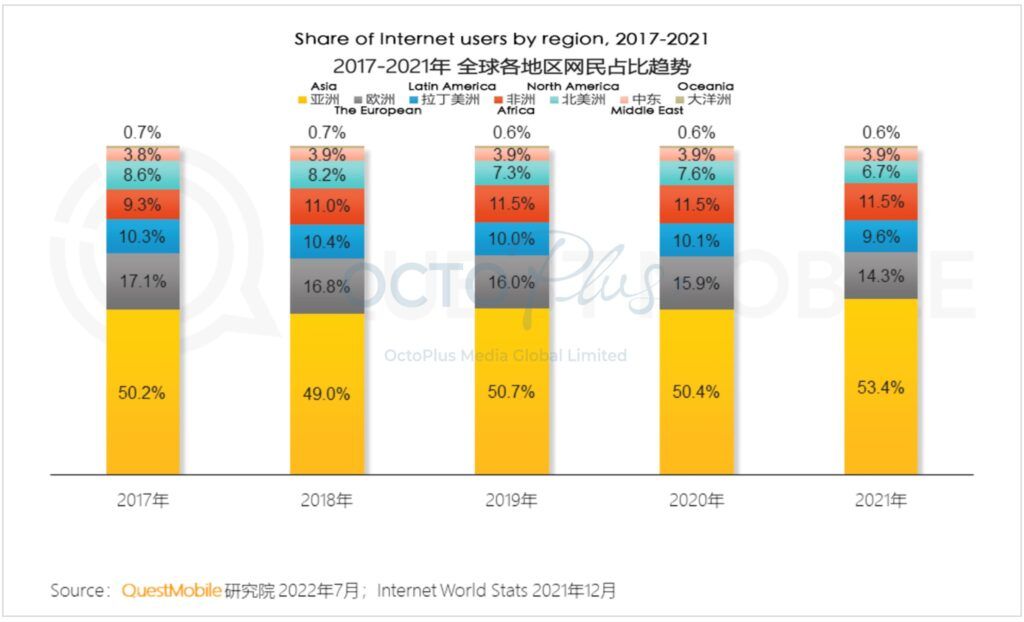
The impact of the internet on the consumer life of users mainly includes:
The retail sales of physical goods sold online continued to increase, which increased the overall consumption of the market
The internet has brought about a change in the convenience of life for users who are inconvenient to travel and built a new normal life with the community as a unit
Offline activities are limited due to the limited environmental impact, it increases the active period of users online, especially the combination of “APP + mini-program”, which meets the life service needs of many users in different scenarios
Users can meet the unreachable offline life by watching KOL live streaming, short videos, and other content, the main group is 25-40 years old and has high spending power
The platforms on which users watch live streaming mainly include Douyin and Kuaishou platforms, while WeChat video accounts are currently more fiercely competitive with Douyin due to the continuous improvement of product functions and content ecological construction, its active user’s penetration rate is close to 60%, the number of active users of WeChat video account has exceeded 800 million
Middle-aged and elderly users over the age of 46 are the main source of growth, and the overall traffic growth has stabilized
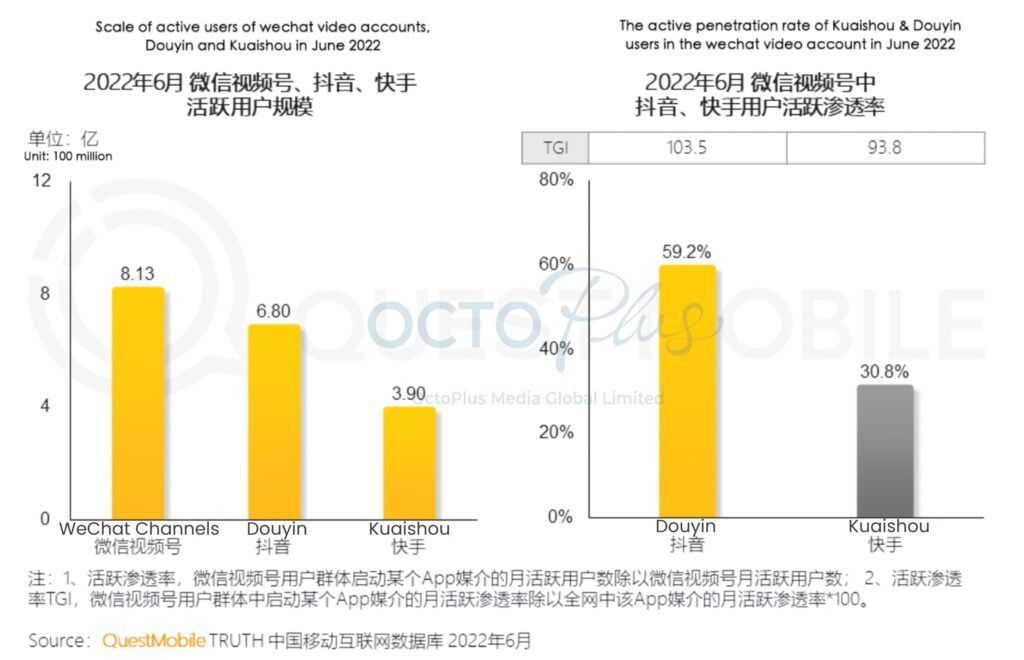
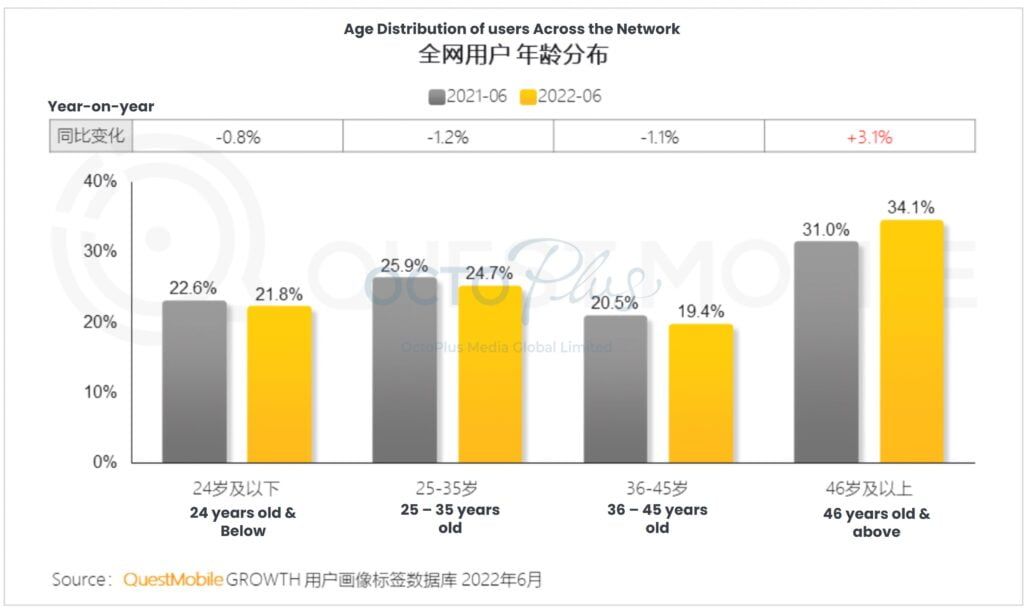
Marketing and Advertising Strategy
According to the report, advertisements related to home scenarios increased in the first half of the year and internet advertisers maintained programmatic advertising as the main delivery method and reduced the delivery on multi- channels. Several industries have become emerging areas with obvious advertising expansion: pet life, nutrition and health products, interest learning, and the metaverse. In the online game industry, the proportion of medium-to-heavy game types such as strategy games and MMORPGs in advertising has increased significantly, user data shows male and female preferences for gaming are gradually converging.
Content seeding, short videos, live streaming, etc., are key to increasing traffic and sales. The short video platform accelerates the development of e-commerce business by integrating content scenarios and consumption scenarios, reaching users in the form of “live streaming + short video” and then converting them; long video platforms attract attention through content innovation, for example, content such as short dramas can trigger users’ enthusiasm for product usage and ideation, it can increase the amount of content interaction.
Due to the impact of the epidemic, online shopping and e-commerce platforms promoted by the internet have developed rapidly, and the proportion of online consumption has increased compared with offline consumption. Many mini programs provide e-commerce platforms with traffic support in social, search, and payment features, further expanding the e-commerce platforms in traffic, hence the emergence of new forms of e-commerce, which have become the commercialization direction of key investment.
Social media apps have also achieved redirect and transformation for online consumption, for example, Weibo, Xiaohongshu, Zhihu, and other platforms, continue to publish sketches highlighting products/services, or live streaming and promote goods through KOL/anchor, etc., which can effectively drive brand exposure and promote conversion.
Characteristics of Internet Development
Metaverse: the in-depth development of the internet has contributed to the development of the concept of the Metaverse in recent years, and Gen Z has become the core user group because they are the group that is most applicable to the mobile internet, they are also the early experiencers and current major consumer groups of all metaverse concepts such as VR/AR, virtual currency, virtual characters, etc.
Daily necessities: with the enrichment of online platforms and efficient delivery, online purchase, takeaway services, and community group purchases have become the standard for home living, especially in first-tier cities.
Travel and play: the popularity of “camping” related content has increased. Many media and brands use camping content marketing, for example, car brands use camping scenes to promote their brands, and variety shows launch celebrity camping shows.
Home office: Telecommuting has become one of the important ways to find employment, and with the penetration of digital offices, the proportion of user groups in the industry after the 60s and 70s and in the cities below the fifth tier is gradually increasing. Efficient office collaboration applications such as DingTalk, WeChat Enterprise, and Tencent Meeting continue to improve the diversified functions for home office needs and achieve user growth
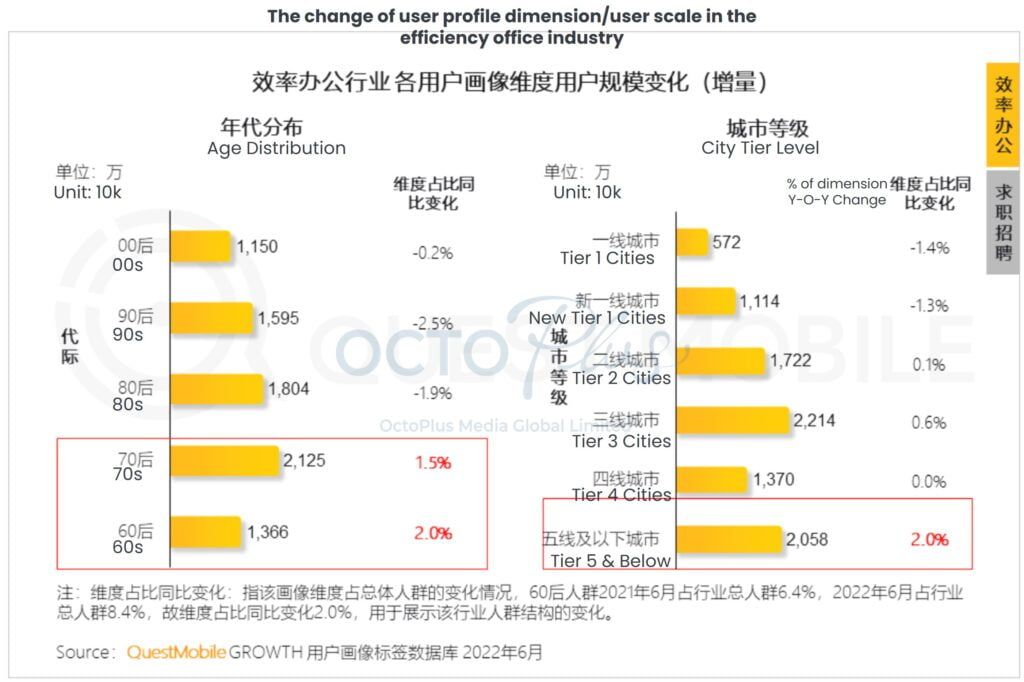
Education and learning: due to the influence of home and enrollment expansion policies, the education and learning industry has strengthened the online development of education and learning in the context of home learning and self-learning, which has also prompted third-tier and below cities and women aged 35 and below to continuously improve their skills and education level. For the higher education industry, due to the final exam, the user scale of APPs of course tools and question banks has greatly increased; the vocational education industry is more inclined to comprehensive APPs, whose contents include medicine, finance, accounting, finance, teachers, civil servants, and construction examinations and many more.


APP OF THE MONTH – MAIMAI

Maimai, which is known as the China version of “LinkedIn”, was launched in October 2013. It is a real-name authentication workplace social platform used by 110 million professionals, with a “well-known professional certification” and a “personal network engine” that helps China professionals to expand their personal network, apply for jobs or recruits, and committed to creating a platform for “personal network sharing” in the workplace.
Maimai brings together “middle and high-end talents” from first-tier cities such as Beijing, Shanghai, Guangzhou and Shenzhen, as well as many Fortune 500 and China’s top 500 companies, and has more than 80 million business elites covering more than 100 industries including financial trade, IT internet, cultural media, real estate, medical care, and education etc. Currently, Maimai has more than 110 million registered users, 5.7 million posts in the content community and 7.18 million professionals linked to its recruitment service, and more than 100,000 companies are active on the platform.
Maimai User Analysis
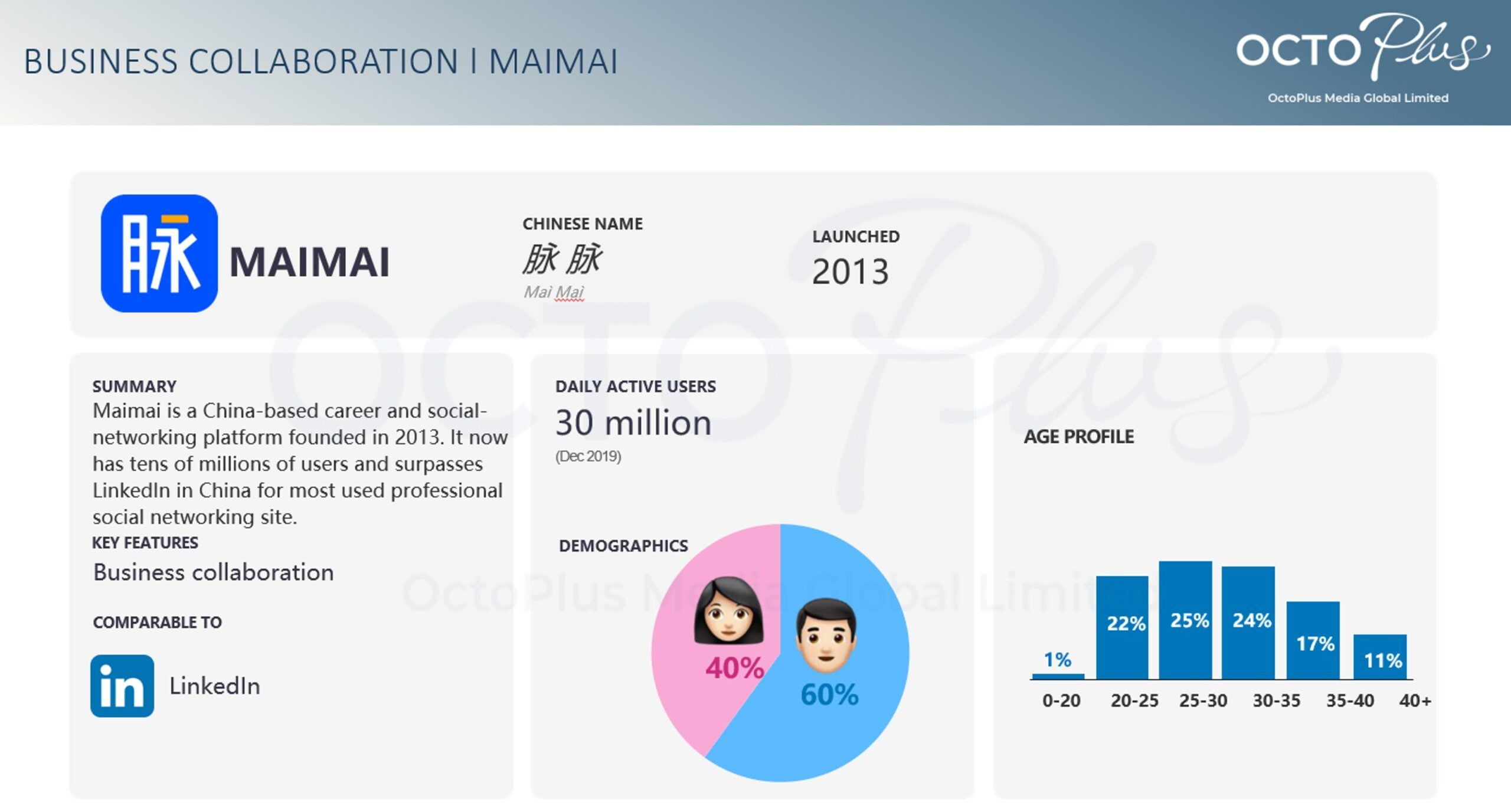
Maimai users have minimal gender difference, 60% are male
MAU 29.49 million, total users 110 Million
49% of users are 26-35 years old. Users in this age group are mainly in the stage of job hunting or job-switching, and the probability of changing careers is high. Thus they have a strong need to understand workplace trends and expand their network
49% are from first-tier cities (Beijing, Shanghai, Guangzhou, and Shenzhen)
Maimai user’s spending power is mainly above medium, accounting for 86.5%
Maimai User Needs
The core needs of workplace friendship
Through scientific algorithms + big data + artificial intelligence to expand the network, and open up the five relationships of “colleagues, classmates, hometowns, same schools, and common friends”, Maimai is committed to expanding the social circle and networking opportunities of professionals in the workplace
Increased demand for community communication
Through UGC (user-generated content), the Maimai content community revolves around different topics in the workplace, arousing user resonance and thinking, publishing and browsing content through tags, and allowing users to comment on the content, like and share, etc, expanding the scope of users absorption of content
High-level demand for industry resources
Maimai provides a resource-sharing social platform, with a complete picture of the workplace users and workplace in China, a comprehensive network of people-to-people connections, allowing users to quickly find talent and resources, and efficiently connect with decision-makers. Maimai has two business models: To C and To B, whether the user is looking for talents or investment or marketing value services, Maimai promotes and provides the allocation and integration of industry resources.
Maimai Advertising Model

Display advertising: Users targeted advertising, attracting attention efficiently, diverting brand exposure, promotion activities or high-quality content, and widely focused
Content advertising: Native advertising deeply impresses users and builds trust with users through content, and deeply influences users’ purchasing decisions and brand awareness
Events Momentum: Build brand influence for enterprises through workplace live streaming, recruitment plazas, and other activities
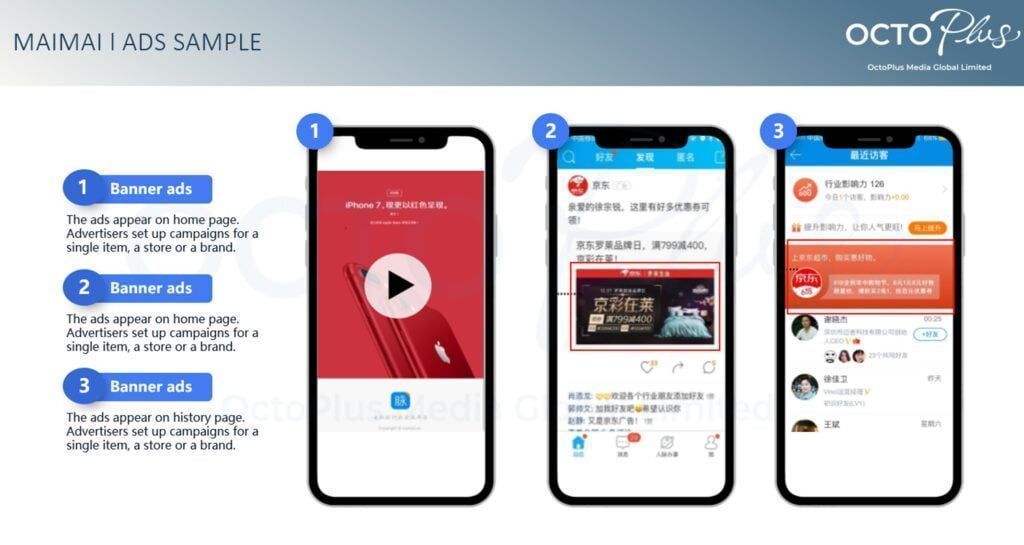
Maimai Marketing Strategy
Brand marketing: Maimai Splash Ad, Homepage in-feed, Gossip Focus picture section, Job broadcast banner, job banner, visitor page list, skinner
Content marketing: Maimai industry headlines, Maimai native topics, Maimai event push, Maimai systems news, Maimai off-site media promotion
Event marketing: Maimai enterprise big shot job broadcasting, Maimai job broadcasting gift implantation, Maimai employer brand marketing, Maimai event topics
Maimai Case Study
Swarovski
Through China Trading Desk and China data bank, Swarovski promotes brand awareness of Swarovski as a corporate gift to China enterprises in China’s first-tier cities on the Maimai platform, targeting medical, finance/insurance, entertainment/tourism/hotel, technology, software, the auto industry Directors or big corporate, 25-45 years old audience who have purchased any luxury brand in the past two years. Swarovski’s advertising on the Maimai platform has achieved good results, with a click-through rate of 4.19% which is 279% higher than the click-through rate benchmarks.

If you want to know more about Maimai’s case study and advertising inquiries, please contact us.
-End of the Newsletter-
Feel free to talk to us
It’s a team with one single shared goal, which is our client’s success. Deliver results for your business now.




























